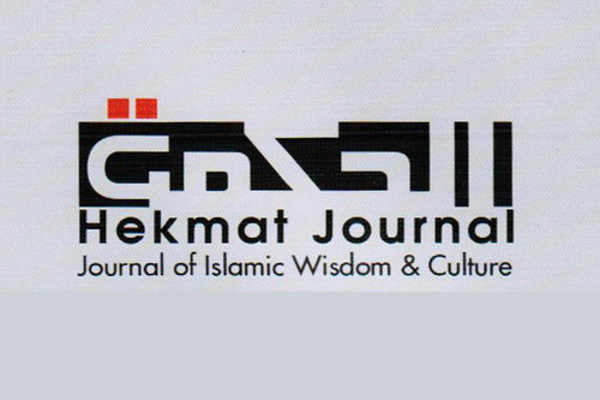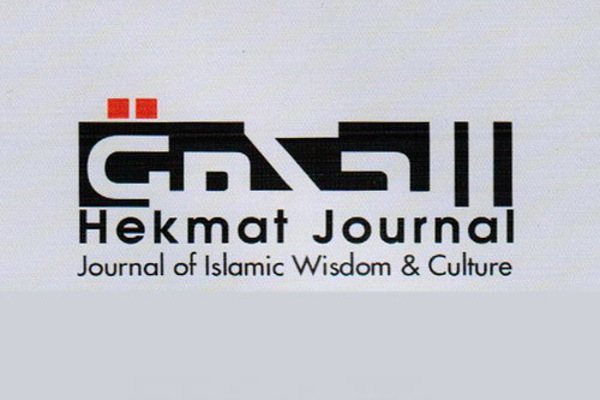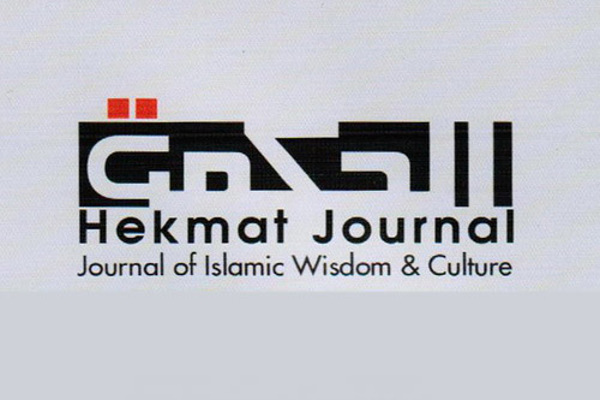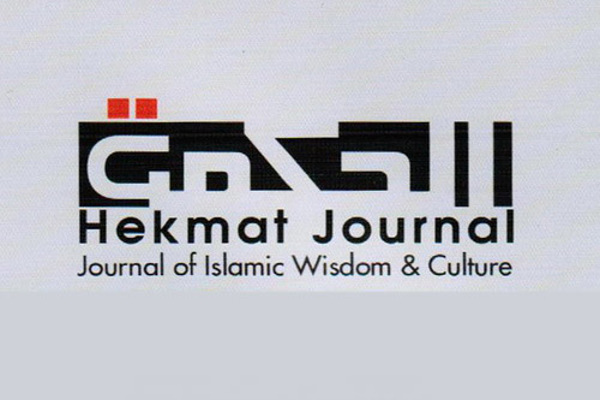Prophet Abraham’s Call : Reasoning in order to approach the Proof / Dr Abbas A. AbdulRidha

The premises of Abraham’s arguments against polytheism which defined as Belief in and worship of more than one goday الإیمان بتعدد الآلهه were founded on the notion that worshipping distant, shining objects, which the low-minded endowed with a power which does not reside in them, was to no purpose. For as the Quran says:
When the night covered him (Abraham) over, he saw a star. He said (to his people): This is my Lord, but when it set (the star), he said: I love not those that set.3
Because Abraham wanted to lead his people to that great sight of the true faith, it was first necessary “to plant the first seed of doubt یزرع الشک ” into their cult of the stars and heavenly bodies. It is a well known philosophical dictum that “a doubt is the first step of reasoning الشک هو الخطوة الأولى للتفکیر ”.4
One group that trusted Abraham’s reasoning started responding to his message. One reason for this was the demonstration he made of the uselessness of worshipping astral bodies. The Quran says:
When he (Abraham) saw the moon rising in splendor, he said “This is my Lord” But when the moon set, he said: Unless my lord guides me. I shall surely be among those who go astray. 5
In making this connection, Abraham was trying to show how ridiculous it was to apply such a grand concept as “God” to a body that, on closer examination, not only sets like the star, but changes its shape from hour to hour, and even depends for its light on some other body! He declared “How his appearance is deceptive and therefore, that is not God to direct their insight to real God and to conclude from that moment that the appearance to the eye is something unreliable. He asked, in their presence, for guidance from the “true God”. In the next stage of his address, the concept of “true God” is development, more fully: now it is the “sun.” The Quran tells us that:
When he saw the sun rising, he said “This my Lord, this is the greatest (if all).” But,
when the sun set, he said: “O my people I am indeed free from (guilt) of giving partners to Lord (Allah).”6
With that image Abraham reached the point of his greatest insight and was ready to begin his condemnation of the worship of heavenly bodies. The sun, no matter how impression, is not the God who created human beings and all the wonderful works around us, and it is impossible to serve creatures. He asked worshippers to deny anyone who proclaimed the “One True God”.7
Then Abraham attested to the following in public, according to the Quran:
For me I have set my face, firmly and truly, towards Him who created the heavens and earth, and never shall I give partners to Allah. 8
According to ‘Allamah Al-A’muli (1994), Abraham (PBUH) prepared the grounds of Tawhīd which was that “God must be lovable and should not pass away or appears and disappear from sight; such a God would not likable and therefore is not the true, lovable god and ought not to merit godhood.” 9
Abraham next announced the revolution of Tawhīd against the “Pitfall الشرک”.
From this, we can see that he wanted to convince his people that the idols are powerless. However, he challenged them by declaring that once they were gone and their backs turned to the idols, he would do something to them, as much as to say that the idols are dependent on human care and attention. As the Quran expresses:
So he broke them to pieces, (all) but the biggest of them that they (his people) might turn to it. 10
Abraham suggested to the people the next day to ask the largest idol, who had survived, to tell them how it all happened?
So they turned to themselves and said: “Surly ye are the ones in the wrong” then they were confounded with shame. They said: “Thou knowest full well that these (idols) do not speak.11
Then Abraham delivered his final attack, he said: “Why then do you worship such useless and weak creatures?12
Analysis of Prophet Abraham’s Evidence:
Analyzing the evidence that Prophet Abraham had presented, we find that he is the one who first established this way of reasoning in order to approach the proof. He organized his steps of proof by designing a strategy for each stage, by understanding and believing the proof. This conclusion differs somewhat from Cajori’s claim. Cajori (1919) states in his book: “the nature of Greek mathematics in its essence is for introducing the concept of proof it is remarkably changed from what it was when there was no notion of proof. The reason for this change has been widely discussed without any definite conclusion”. 13
According to the opinion of some writers,
such as Cajori, the first real proof in history is said to have been given by Thales of Miletus (600 B.C.), in which he proved that the diameter divides a circle into two equal parts. We understand, even it was so simple statement that it appears self evidence as compare to the argument that leads to the proof in 2400 B.C., that a proof is possible and necessary. We think that the discussion of Prophets Abraham with Nimrod, and Moses with Pharaoh (1200 B.C.) had led to the concept of proof, which had preceded the Greek’s proof by around two thousands years.
As we said earlier, Prophet Abraham’s proof was aimed to convincing people that the “stone or other heavenly body can not be a god”.
We know from mathematics that a good proof is not alone sufficient to convince us of the truth of mathematical statement, but also help us to understand what is going on. Proofs which depend on mathematical principles are more convincing, in the sense that they can easily be checked, but are often less helpful in promoting understanding. But in the case of the Prophet Abraham’s argument, the proof enabled the people of Ur to understand and think more clearly and effectively about the concept of Tawhīd.
Our discussion the matter of claiming that the proof was developed prior to the Greek period has led us to stress the importance of understanding, but it should not see this as a criticism of the idea of proof in Greek, since we are not advocating the weakening of the proof that was mentioned by Cajori (1919); rather, we are trying to describe how the argument which led to the proof works. The Prophet Abraham, in order to make a conjecture, and to try to convince the people of Ur , he used a strategy of indirect proof. In order to apply that strategy, however, Abraham had to negate the existing beliefs of his people.
To do so he developed a proof that would justify, step by step, his argument in favor of Tawhīd.
Abraham had to deal with human thought and understanding, which is do not always linear in nature, like a computer of today with a single processing unit. Thus in his argument, from our point of view, he considered the following important divisions of the human thought process:
1) Human language: The structure of the community of Ur had a deep understanding of astronomical language. The prophet used that important tool in guiding his people to
right thinking on the subject of the Onenessof the Creator.
2) Vision: The people of Ur had a very powerful facility for reasoning on the basis of their spatial sense of the heaven bodies.
- Logic and deduction: The people of Ur had some built-in ways of reasoning and putting things together depending on how they made logical deduction.
- Intuition, association, and metaphor: People of Ur was equipped with strong intuitive and associative senses and on ability to perceive phenomena in terms
of metaphor. This helped the Prophet Abraham in his task of stimulating their thinking towards discovering al-Tawhīd.
- Process and time: Prophet Abraham used this facility to process or sequence his actions, which can be of great help in the reasoning process.
- The Starting Point:
وهو الذی خلق السماوات والأرض بالحق
It is He who created the heavens and the earth with truth…14
The argument begins here, and leads to the great insight of Prophet Abraham (PBUH) into the truth of faith. This faith did not stop for Abraham at the wonders of Nature, but extended from Nature up to Nature’s God. Allah not only created the heavens and the earth, but did so in a perfect fashion.
The Argument: His argument was to lead the people of Ur to the conclusion that “God not only created the heavens and the earth, but all creations is held together in true and perfect proportions”.
The status of the people: Abraham’s people had knowledge of the stars and heavenly bodies. But he (PBUM) penetrated beyond that physical world and saw the real world behind it:
وکذلک نری إبراهیم ملکوت السماوات والأرض ولیکون من الموقنین
So also We show Abraham the kingdom of the heavens and the earth, that might be certitude.15
The Procedure that leads to the Proof:
Prophet Abraham designed his plan to include several stages in order to employ the results of each as premises in his final argument against Polytheism. We can detect from this approach that he used the following formula:
Reasonable à Reasoning à Leads to Proof
The procedure includes several stages in the process of reaching the final stage of the proof. His proof consisted of two phases:
Phase one (Argument against the people who worshipped the heavenly bodies):
Stage (A): The purpose of this stage was to open the door to dialogue with his people.
First step: The reasonable doubt
- He began by showing the futility of worshipping distant beautiful things shine.
- The shining of a star in the darkness and its extinction in the broader light of day.
Second step: The reasoning:
- The shining and extinguishing of lights are phenomena that are subject to laws.
- Who is the author of such laws?
- Whoever he is that author must be bigger.
Third step: The result leads to the first proof.
- A fragment is initiated in the worshipping of the star.
- More reasons are added to the futility of worshipping it.
- The final result: the star is not the power, but in fact much less than the Supreme Power.
Stage (B): The aim is to extend the domain of the doubt.
First step: Doubt should apply to the moon as well:
- The moon looks bigger and brighter than the star, and yet:
The moon changes its shape from hour to hour, and even depends for its light on the Sun.
The second step: The reasoning:
- It seems that the moon is subject to the same laws which cause the star to “shining and extinguishing its light.”
- Asking who the author may be under whose laws this phenomenon occurs.
- The final result: the star is not the power, and is much less than the Supreme Power.
The Third step: The Result:
The interim conclusion allows him to proceed to the second step of the final proof.
Stage (C):
At this stage, in order to reap the fruit of the seeds of doubt he’d planted, Abraham showed to his people that he wanted to search for something more reliable than phenomena appearing to the eye in the darkness of the night. This might be considered as a “hint or clue” forms Abraham to his people of an upcoming transition to the higher level of reasoning.
First step: Argument regarding the sun.
- Behold the Sun, with more light in the open day.
- It may be the best clue to discovering the truth.
Second step: The reasoning
- It is bigger than the Moon
- The Sun appears and disappears every day from the one’s sight.
- Ne sight.
- Nevertheless, the sun follows the same laws that controlled the star and the Moon.
Third step: We arrive at the same result; the sun is not the power and is much less than
the Supreme Power.
The advanced stage: Therefore, none of those heavens bodies can be the God who
Created you and the works you see around you.
|
Prophet Abraham’s Call : Reasoning in order to approach the Proof
By: Dr Abbas A. AbdulRidha* |
|
Prophet Abraham’s Call : Reasoning in order to approach the Proof
By: Dr Abbas A. AbdulRidha* |
The proof: 1) “We might turn to the true God! Let us deny all these and proclaim the One God” This was the slogan that Abraham spread among the people of Ur.
(2) Abraham also said, “For me, I have set my face, firmly and truly, towards Him who created the heavens and the earth, and never shall I give partners to Allah.”
Phase Two (The Argument Against Polytheism):
This was the final stage of Abraham’s argument. He used the previous steps as premises to construct the next series of proofs of al-Tawhīd. He tried to introduce the formula on a large scale to Ur’s people, including its King. The Polytheism was the main religion in that area and at that time.
The objective of this stage:
The main objective of Abraham in pursuing this line of argument was get people to arrive at an answer to the question: “ What purpose does worship serve which hears not and sees not, and can profit you nothing?”
He wanted to bring the people of Ur to the clarity of truth instead of the vagueness and mystery of superstition, to the security of faith instead of the haunting fear of those who have no clear guidance.
Step one: (Reasonable doubt):
Abraham: “What are these images, to which you are devoted?”
People : “We found our fathers worshipping them.”
Abraham: “Indeed you have been in manifest error, you and your fathers.”
People : “Have you brought us the truth?”
Abraham : “Your Lord is the Lord of the heavens and the earth, He who created them from nothing, and I am a witness.”
Step two: (The reasoning)
The Prophet Abraham wanted to show the people, in order to convince them, the powerlessness of their idols. He promised his people when he told them that “I will do something to the idols when you go and turn your backs.” The aim was to prove to them that their idols depended on the “people is care and attention.” His people was interested to see what he would do, so they left him to his own devices. Abraham by that challenge made his people sleep with the right- thinking to find the proof.
Step three: leading (better reasoning and proof)
He broke all the idols to pieces, except the biggest of them.
- It would appear that a fight had taken place between the idols, and the biggest had smashed the others.
- Would people turn to the biggest and ask him how it all happened?
Step four: (a formal council of the people was held, and Abraham was arraigned)
Different groups of people started to speak at the general council, “Who has done this?” Then Abraham directed them toward the truth, forcing them to use their reason to arrive at the right answer on their own. He suggested the following ideas:
- Why do you not ask the idols, if they can talk?
If they do not answer you, redirect the question to the biggest, if he too can talk?
Step five: (The proof)
- Some of the groups thought Abraham had the best argument.
- Those groups told their fellows that it was useless arguing with Abraham.
- The others hung their heads in shame.
- The council finally said to Abraham, “But you know quite well that idols do not speak.”
This was the most important step, i.e., proof should self-evident to the people themselves. This set the stage for his final attack on polytheism.
By forcing his people to admit in so many words that idols could not speak, Prophet Abraham delivered the final statement of the proof of Tawhīd: “Then why do we worship useless and powerless creatures?”
This question is phrased thus in the Holy Quran: [[Do you then worship, besides Allah, things that can neither be of any good to you nor do you harm? Fie upon you, and upon the things that you worship besides Allah! Have you no seen?]].16
* Scientific Researcher, Montreal, Canada
1 M.H. Al-Tabatabai, Tafssir al-Mizan, Vol. 1.
2 (06:76 Quran)
3 For more details see Muhmmad Baqir As-Sadr (1931- 1980): “Our Philosophy”. Translated into English by Hussain Nasr, Chapter Two –The Value of Knowledge-
4(06:77 Quran)
5(06:78 Quran)
6Moghnia, M.J. (?): Al-Tafsir Al-Mobeen. Tehran, Kuwait: Al-Balagh Orgniazation.
7(06:79 Quran)
8Al-A’moli, Jawadi (1994): Al-Tafsir al-Maodhoai Lil Quran al-Karim, series # 6 al-Tawhid fil Quran.Beirut: Dar Al-Safwa.
9Quran: (21:58)
10 Quran: (21:64-65)
11 M.H. Fadhullah, min wahyil Quran من وحیّ القرآن, The personality of Abraham.
12Cajori, Florian (1919): A History of Mathematics. New York: Macmillan.
13Quran: (06:73).
14 Quran: (06:75).
15 (21:66-67 Quran).





